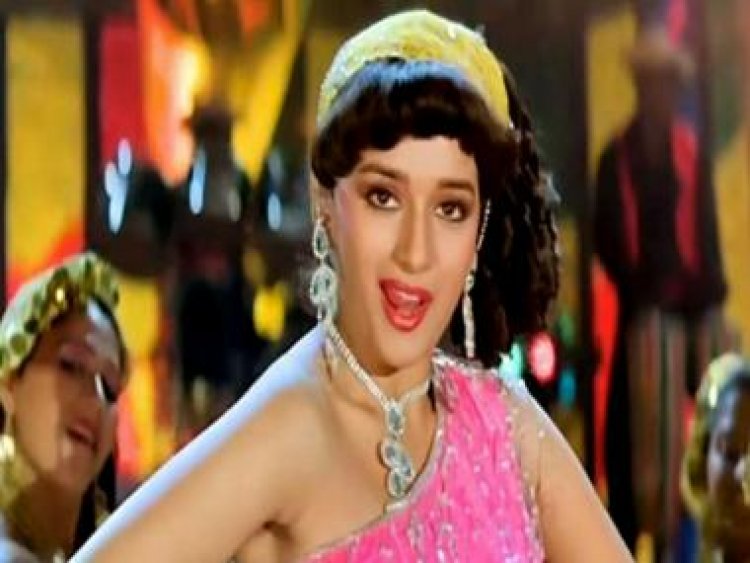Retake: The long and twisty journey of the item song
Retake: The long and twisty journey of the item song

In a scene from Raj Kapoor’s Awara (1951), Raj tells his mother he is off to see a friend. As he steps out his mother unearths a handgun, tellingly, filed under some currency notes. The image quickly dissolves into scenes from an alcohol den where Cuckoo Moray sings “Ek Do Teen Aaja Mausam Hai Rangeen”. The sequence of imagery, carefully juxtaposed here, sets the precedent for all kinds of unhinged merrymaking. Raj (Kapoor himself), broodingly stares as a jovial Cuckoo, as she floats through a sea of ogling, intimidating men. Moray became the proponent of the ‘item song’ much before her friend Helen iconised it with her inimitable, often peerless modern interpretation of dance and sensuality. And while at some point the item song was a signifier of habits and spaces, corners in the country dignified men ought not to venture it continues to hold a unique place in our cinema, having gone from signifier of the murky to the extravagance of the celebratory.
In Shakti Samanta’s Howrah Bridge (1958), Ashok Kumar enters a hotel to investigate his brother’s death. It’s a perilous decision, one that is forewarned by the disarmingly stunning performance of Helen dancing to “Mera Naam Chin Chin Chu”. While Awara teases the song as a foray into vice – prefaced by the sight of a pistol filed under money – Howrah Bridge uses it as a rite of passage. In both, the marginally provocative gymnastics of the song and dance are oral and visual innuendos aimed at suggesting the company of varying forms of malcontent. In Sholay (1975), Helen regales a worn Gabbar (Amjad Khan) in a film where his own intimate life is never quite examined. “Mehbooba oh Mehbooba” besides being an iconic song is also the moment in the film where Gabbar’s desire for company or any form of intimacy – physical or otherwise – is established.
Silk Smitha somewhat took over the baton of the item song, to a lesser extent during the 80s, but by this time dance and performative brilliance had somewhat matched up to the need to simply absorb the male gaze. Madhuri Dixit added a certain artistic sharpness and grace to the item song that gradually went from hinting at decadence to a form of celebration. Dixit’s “Ek Do Teen” is possibly one of the most joyous songs to come out of a pantheon that has often been criticised for reducing women to objects. Until that point though, though, the item song was still subservient to working-class men, offering to their beaten, often ponderous existence, a fundamental sense of relief, maybe even freedom. Post globalisation, though, all that changed with the sequence becoming a showcase of both affluence and pedigree.
The item song has undergone aesthetic change, but the larger geometry of its application continues to remain the same. In the post-globalisation phase it came to symbolise a distinct form of elitism. While “Tu Cheez Badi Hai Mast Mast” signalled the introduction of watered down lyricism, Mani Ratnam’s “Chaiya Chaiya” established a bar, for creative liberty so high, it has since possibly never been crossed. The women were pivotal, but they were slowly also becoming central, both visually and otherwise. Shilpa Shetty’s “Main Aai Hun UP Bihar Lootne” from the little-known film Shool, was a breakthrough in terms of both language and reach. The fact that the song is better known than the film is evidence of the contradictory status the item song had achieved by the late 90s. Indian men wanted to plant the guardrails of conservatism but within them, women were beginning to strut their sensuality – at times in the service of men, at times to simply unshackle themselves.
The debate over the relevance of the item song is a never-ending one, considering how unique it has been to Indian cinema. A majority possibly believes it is a cynical ruse to get something basic as male lust to do what intellectual will cannot – get them excited for a film. But it’s also hard at times to believe that in the digital age, where songs become available on the internet ahead of the film itself, the notion that it only acts as a side-serving of spice, is naive. Songs last minutes so does the sight of pure carnal joys. A film has to do more.
One of the most iconic item songs of Hindi cinema’s history features what would, after the release of the film, become a family (The Bachchans in Kajra Re). There is skin in the song, but there is also a lyrical quality that makes the song, the dance, the synchrony of bodies jiving to the music, a thing of wonder beyond the pale pleasures of sleaze and voyeurism. It’s a template yes, but it can still be accomplished with the kind of joyous, almost unrepeatable bliss of myriad movements, that the art itself sheds the weight of itemisation. To, at times, become bigger, more memorable than the film that helped it sprout.
Manik Sharma writes on art and culture, cinema, books, and everything in between.
Read all the Latest News, Trending News, Cricket News, Bollywood News, India News and Entertainment News here. Follow us on Facebook, Twitter and Instagram.
What's Your Reaction?

























































